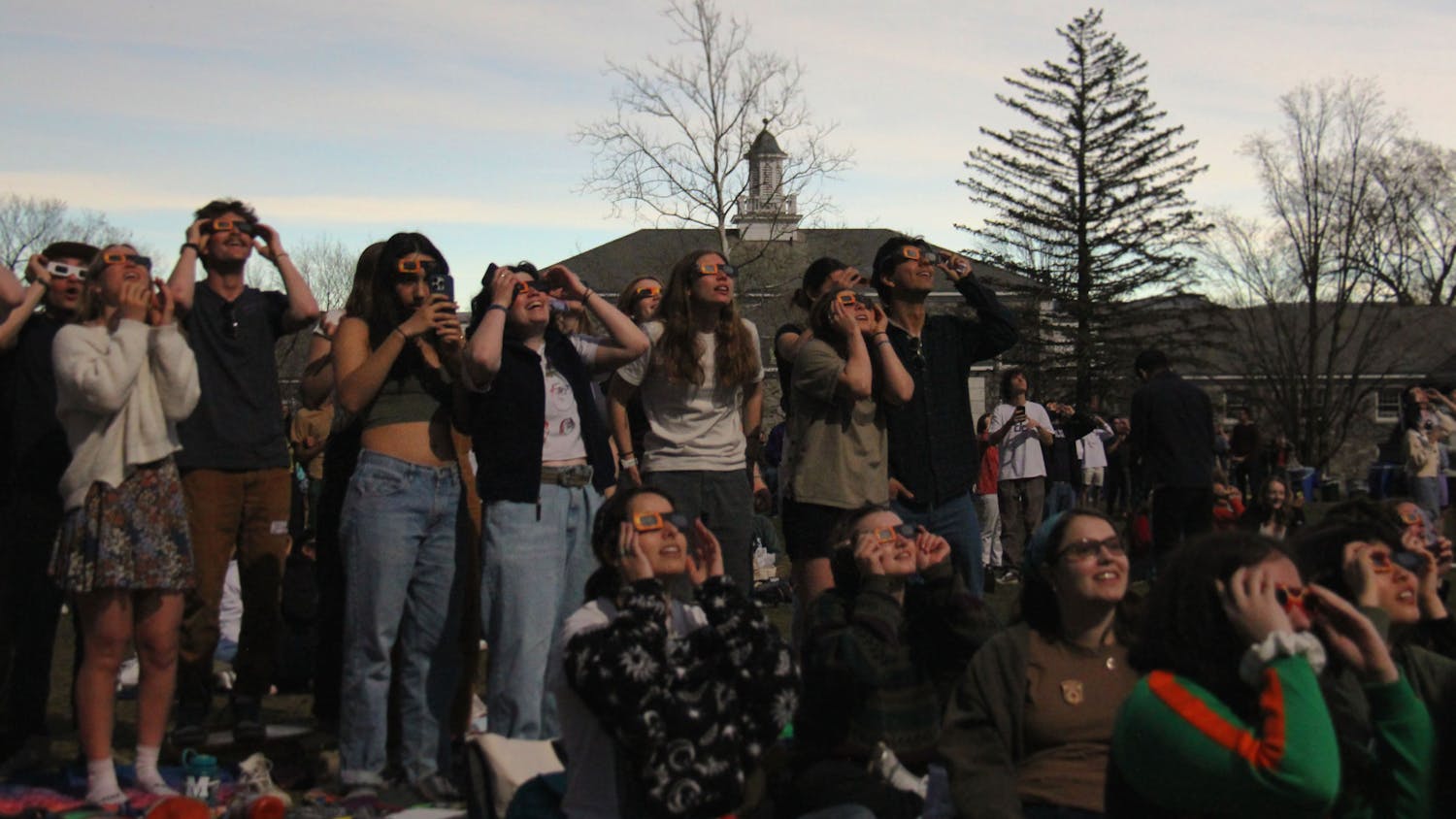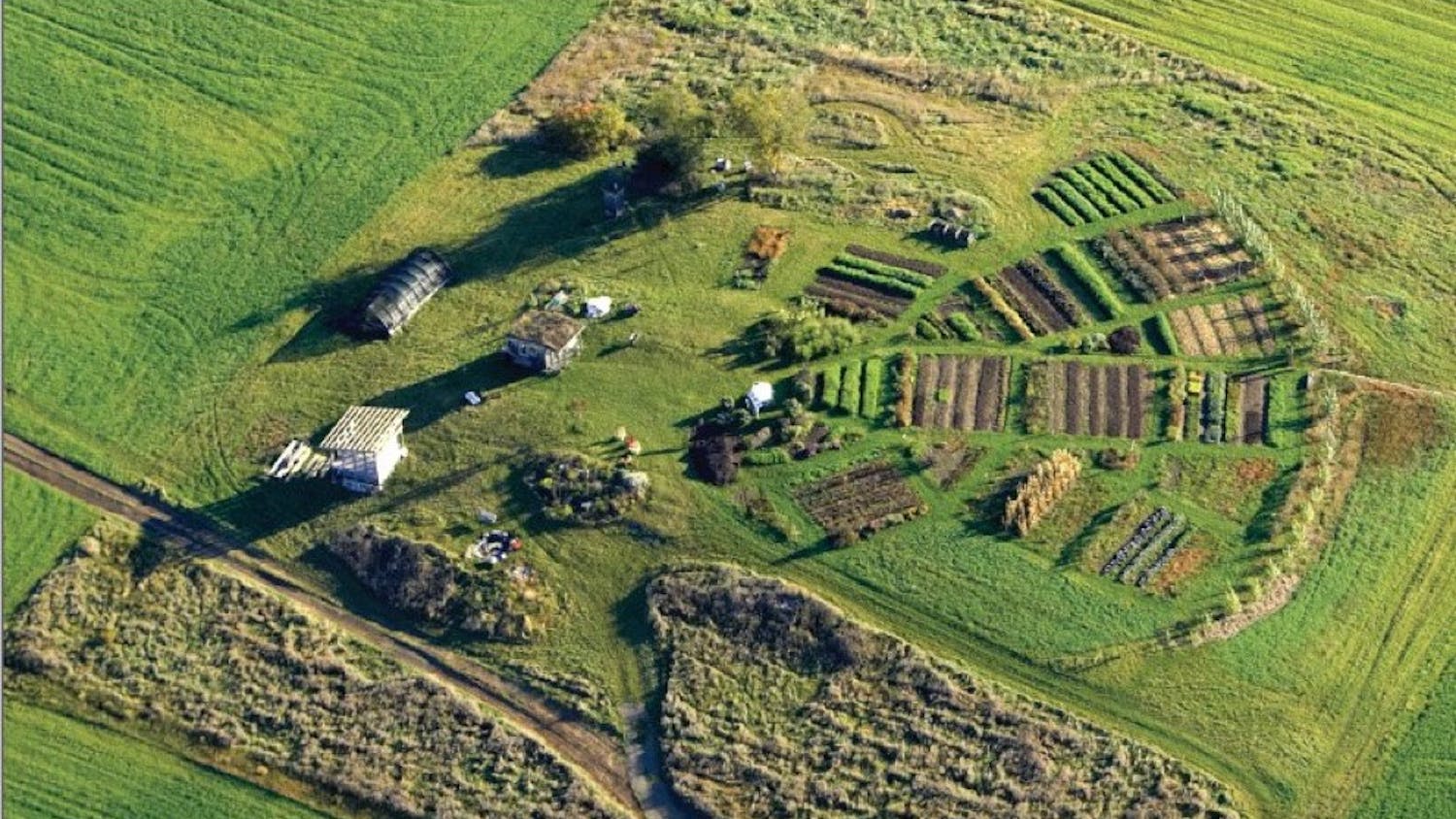With the newly installed squash center green roof, the second one at the College after the 2004 installation at Atwater Dining Hall, the nine-court, 18,000-square-foot Squash Center has been awarded by the U.S. Green Building Council (USGBC) its highest level of certification, LEED (Leadership in Energy and Environmental Design) Platinum last month. This is the second time the College has won the platinum certification. The other LEED-certified building is the Franklin Environmental Center at Hillcrest.
The Squash Center has nine courts arranged around a central corridor covered with a skylight. Connected to the southeast end of the Peterson Family Complex, the $7.8 million building replaces the now-defunct Bubble, which had five squash courts inside.
The Squash Center opened last October without the green roof, but with numerous other sustainable features aimed to boost its energy efficiency and lower its impact on the environment. The skylight design allows filtered, natural light into the building, providing enough light during the day to make electric lighting unnecessary.
“LEED Platinum certification says two things about the college,” said Director of the Office of Sustainability Integration Jack Byrne. “One is that we hold ourselves to a high standard of excellence in the way we design and construct our buildings. Second is that we value transparency and the opportunity that having a third party evaluation of the project affords us to learn from out efforts to make our buildings reflect our sustainability ethos.”
The building materials, from the green roof to the high-efficiency LED lights in the building point to a focus on low impact materials. Likewise, the project manager tried to extract materials from the local community, whenever possible.
“We try to stay local within reason,” said College Project Manager Mark Gleason last year before the opening of the Squash Center. “But in general that’s what we are trying to do: meet the 500-mile radius. For concrete and steel that’s easy to do. For siding, sometimes not as easy to do,” he continued.
One obstacle to the local commitment is the Athletics department’s demand of the use of ASB squash courts – a product only manufactured in Germany.
“The courts come from Germany and there’s no way around it,” Gleason explained. However, the reuse of five of the original squash courts from the Bubble seemed to help alleviate the issue.
Some other key sustainable features of the Squash Center excel in include its efficient ventilation and mechanical systems, which can monitor equipment use and functionality, its insulated building envelope and the use of low-emitting and environmentally friendly materials, which helps ensure the high quality of the indoor air.
The building also contains wood from forests certified as responsibly managed and the green covers the roof with thousands of living sedum plants.
In the Squash Center project’s LEED application, the project also received points for using renewable energy from its solar array and biomass plant, and for diverting away from landfills 97 percent of all construction waste and reusing the five original squash courts. Other small features, like high efficiency pumps, LED lighting and low VOC materials, reflect the College’s long-standing commitment to sustainability.
The green roof, which is the newest feature of the building, has more of a practical function than what its appearance first indicates, providing insulation and protecting the roof’s membrane. In a storm, the water percolates and saturates in the layer of the sedum-growing soil, preventing peak water run-off from possibly damaging the roof. The greenery and soil also naturally cool the building by absorbing sunlight, potentially reducing the cost of the air-conditioning of the building, while saving energy.
“Because it’s visible and tangible, it prompts conversations,” said Director of Athletics Erin Quinn in his response to the Campus last October. “Now we have a very prominently visual feature which prompts conversations that might not have been started otherwise.”
However, creating a building with extremely sustainable and innovative features does not come without a cost, a reality that is aggravated by the decision by the Board of Trustees to only construct buildings that are bankrolled by financial gifts.
“The upfront costs for designing and building a building of LEED platinum are certainly higher than had we not gone this way, but over the long term those added costs begin to pay off with less energy use, less maintenance and replacement of equipment and materials, and greater satisfaction in the use of the building,” Gleason said.
“At the start of any building project, the question needs to be asked if the college resources are being used for the best long-term goals of the college. In the squash building, given the needs of the squash program, the answer to that question is absolutely yes,” he added.
Byrne and other sustainability leaders on campus seem to emphasize that this certification is an indication of momentum that we are looking forward to continue with a commitment to sustainable building.
“Middlebury has a well-earned reputation as a leader in environmental stewardship and sustainability. But we can’t rest on that reputation. We need to keep thinking ahead about how to do better in our design and construction of buildings, the way we use and conserve energy, how we can use the vast intellectual power we have via students, faculty and staff to identify the causes of our sustainability dilemmas and to solve them,” Byrne concluded.



